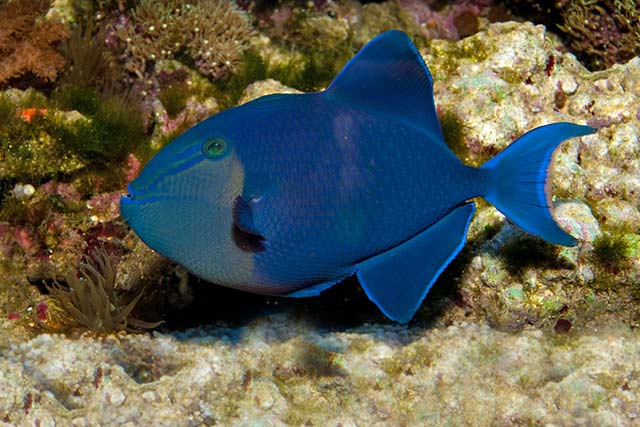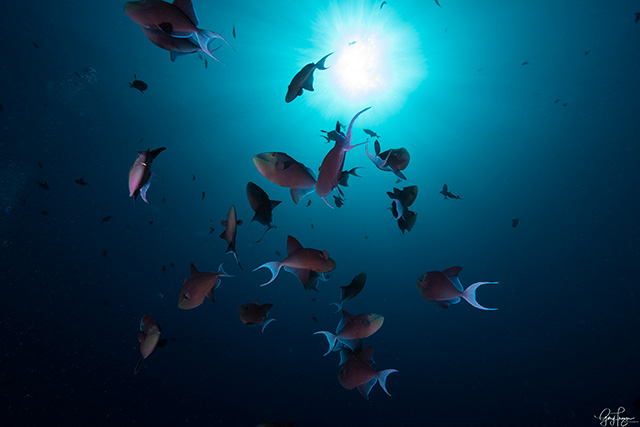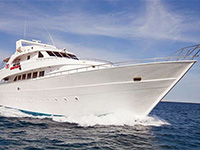Reviews: "Love the newsletters! Keep them coming" Janice Fleming...MORE REVIEWS

Redtooth Triggerfish

How to identify them?
Sometimes mixed up with the blue triggerfish, you can distinguish the Redtooth by the two dark lines running from the front of their eyes towards the mouth. They also have two blunt protruding front teeth which are red or orange.
Up to 40 cm long, they are often in groups. In the northern Red Sea though, the adult groups are much smaller and only the younsters form large schools. They have deep blue or purplish bodies, with a lighter or greenish face.

Where to see them?
Apart from the Red Sea, they live in the Indian and Pacific oceans. They used to be rarely seen off Pakistan and India, but in the last couple of years they have also been caught in commercial quantities there.
The adults like to live on current rich seaward reef slopes, from 5 to 55 m.

They are dangerous when guarding eggs - don't get too close
Triggerfish lay eggs in a nest in the sand. According to Hiroshi Kawase, the female lays the eggs in the early morning and the eggs hatch in the same day after sunset. She tends the eggs by fanning and blowing water on them, and guards - them driving away intruding fish (and divers!). The male redtoothed triggerfish, will also guard the eggs but doesn't tend them. Triggerfish guarding eggs may try to bite curious divers and have caused injuries.
Like other triggerfish, the redtooth spawns on a full moon

What does the redtooth triggerfish eat?
They prefer crustaceans, but will also eat zooplankton, algae, small fish and squid.
What triggers them?
They are called triggerfish because of their ability to raise up the long dorsal spine behind their heads and lock it in place with a second spine. They do this for protection, wedging themselves into the reef to prevent predators dragging them out.
Animalia (Kingdom) > Chordate (Phylum) > Actinopterygii (Class) > Tetraodontiformes (Order) > Balistidae (Family) > Odonus (Genus) > O. niger (Species)
References
Kawase, Simplicity and diversity in the reproductive ecology of triggerfish (Balistidae) and filefish (Monacanthidae), Fisheries science, 2002, Volume 68.
Coral Reef Fishes, Indo-Pacific and Caribbean, by Ewald Lieske and Robert Myers, Harper Collins
Suyani et al, First report on the diet and reproductive biology of red-toothed triggerfish Odonus niger, Cambridge University Press: 2021

